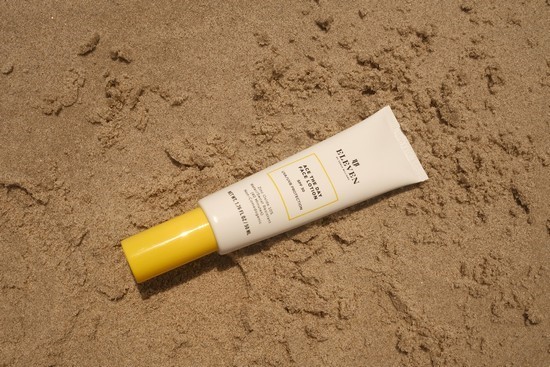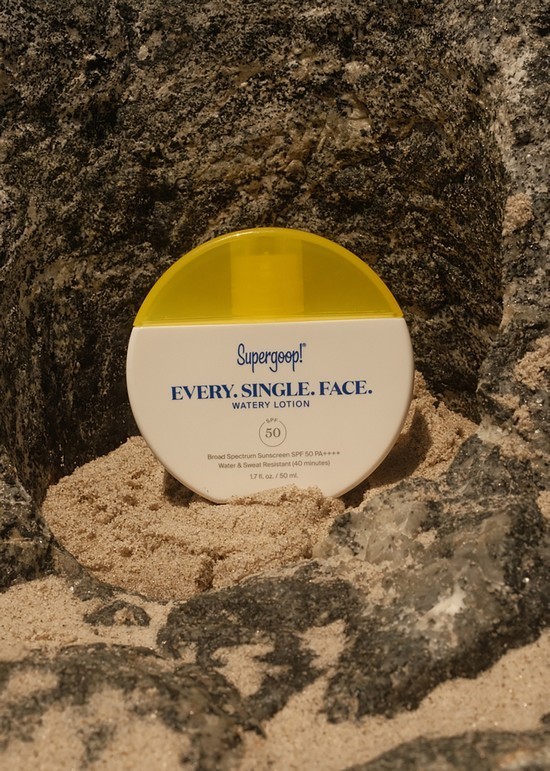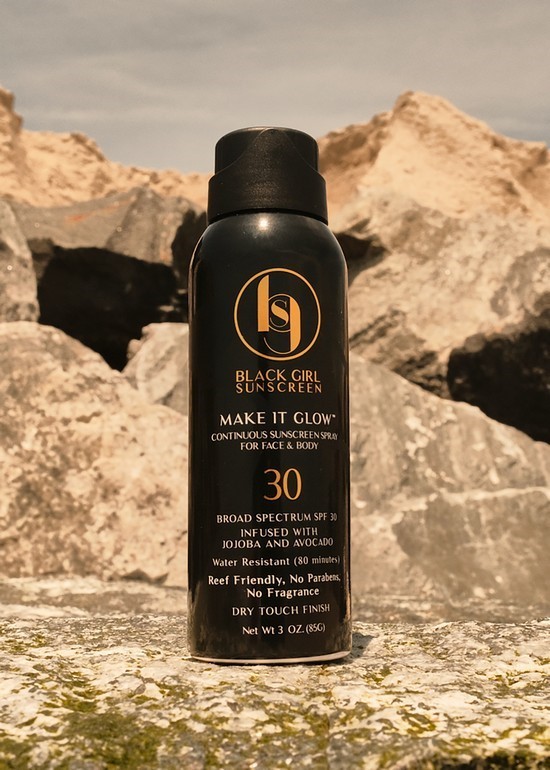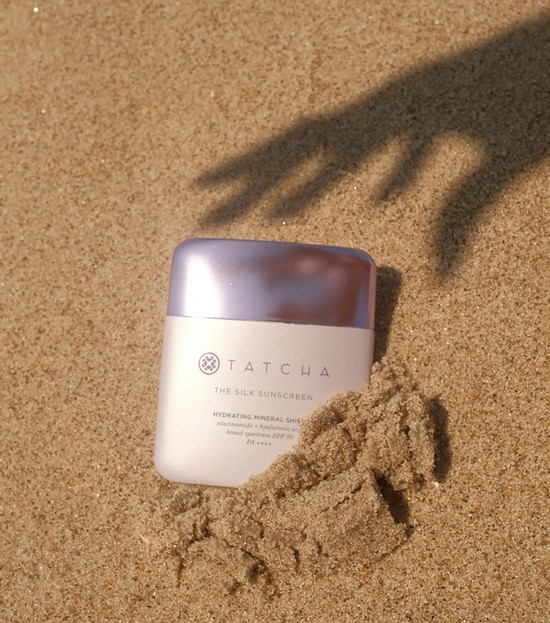With summer fast approaching, it is time
to pick up a fresh supply of
sunscreen. And as always, there are a lot of new
products. Perusing the options is sure to raise questions. Does the product go
over or under moisturizer? Is mineral sunscreen more effective (and why is it
often chalky)? Why do some products leave a white cast on skin, and how can
that be avoided?
اضافة اعلان
Here, we have got answers to those and other
queries.
What strength SPF should I be wearing?
“What we recommend is
sticking to a SPF of 30 and reapplying it every two hours,” said Dr Silvia
Mancebo, a dermatologist at Weill Cornell Medicine and NewYork-Presbyterian in
New York. It takes an ounce of sunscreen to cover the entire body, she said,
which means taking the product with you if you’re going outside for several
hours.
Several new products in handy sizes lend themselves
to doing just that, like Ace the Day Face Lotion SPF 30 by EleVen by
Venus Williams, a sunscreen line from the tennis star that also includes a recently
introduced SPF body lotion, and Cocokind Silk
SPF, which has moisturizing
banana blossom in its formula.
If you burn easily, wearing a higher SPF sunscreen
may seem sensible. Chances are, though, even a very high SPF won’t provide as
much added defense against sun damage as you’d think.

According to Carla Burns, the senior director for
cosmetic science at the Environmental Working Group, a nonprofit research and
advocacy organization, the actual difference in the amount of added protection
typically provided by very high SPFs is minimal. SPF 30 protects against around
97 percent of UVB rays, which cause sunburn, while SPF 50 provides about 98
percent protection, according to the American Cancer Society.
Are mineral sunscreens better than chemical ones?
Mineral sunscreens, with ingredients like zinc oxide, are effective and
gentle, even if they bring to mind lifeguards’ noses slathered in white gunk.
Several decades ago, zinc oxide was whitening and hard to rub in, but sunscreen
formulations have come a long way. “There’s a variety of zinc oxide-based
products on the marketplace that rub in streak-free, are not whitening,” Burns
said.
Mario Badescu Mineral Sunscreen SPF 30, for
instance, combines zinc oxide with moisturizing hyaluronic acid and glycerin
and blends well into the skin.
Are spray sunscreens equally effective?
Spray sunscreens are
popular, but it’s tricky to ensure that every bit of
skin gets covered. (A
reliable method is to spray products in your hands then rub them in.) They are
nonetheless appealing, especially for parents. As Shontay Lundy, the creator
and founder of Black Girl Sunscreen, put it, “Your kids might not stand still,
and it’s easy.” Her company recently introduced BGS Kids Spray & Play,
which is SPF 50 and dries quickly when applied. It was created, she said,
because of customer demand. There’s also an adult version, Make It Glow, that’s
SPF 30.

Another option is Classic Spray SPF 30, introduced
in April by the sun brand Vacation. Its scent, with coconut and banana,
suggests a poolside cocktail with a tiny paper umbrella on a hot day.
What about SPF oils?
Sunscreen oils have an
elegant feel and leave a soft sheen on the skin. “They give a nice hydration,”
said Penny Coy, a vice president of merchandising at Ulta Beauty. “They tend to
have a really beautiful glow. Who doesn’t want that on your arms and legs?”
A noteworthy new option is Isle Body Oil SPF 30 from
Cay Skin, a recently introduced sun-care collection that was founded by the
model Winnie Harlow. (Harlow has vitiligo, a condition that causes patches of
skin to lose pigment; her line promises to suit all skin tones and sensitive
skin). The oil is pleasantly light and has moisturizers like argan and coconut
oils in its formula.
Do I need to worry about sunscreen if I have dark
skin?
Everyone should be wearing
sunscreen daily. Traditional sunscreens, both chemical and mineral, can leave a
white cast on melanated skin, but some newer formulations are designed to blend
without streaks on all skin tones. One example is Every. Single. Face. Watery
Lotion SPF 50, a recent release from Supergoop.
 Is sun protection necessary if I’m inside, working
near a window?
Is sun protection necessary if I’m inside, working
near a window?
“From a window you’re still
getting
UV exposure, so absolutely I encourage all of my patients who are
working from home to put sunscreen on,” said Dr Jasmine Onyeka Obioha, a
dermatologist at Cedars-Sinai Medical Center in Los Angeles.
It’s important, Obioha added, to wear sunscreen on a
cloudy day because you’re still getting UV exposure even if it’s not bright and
sunny.
Does sunscreen go over or under foundation and
moisturizer?
Ideally, sunscreen should be
the final step in your morning regimen, Mancebo said, but it’s OK layered
between moisturizer and foundation. Several new fluid formulas, like the Silk
Sunscreen Hydrating Mineral Shield from Tatcha, lend themselves to layering
without feeling too heavy. This one also contains niaminicide to help reduce
redness and even skin tone.
 My skin’s sensitive. What type of sunscreen should
I use?
My skin’s sensitive. What type of sunscreen should
I use?
Some sunscreens can cause
reactions like dermatitis on sensitive skin. Mineral-based sunscreen tends to
be safest — it’s what most dermatologists recommend. “You want to go for a
product that has a shorter list of ingredients,” Mancebo said. “You want to
look for something that is dedicated to sensitive skin, then turn that bottle
or tube around and make sure it doesn’t have any fragrance and it’s free of
dyes.”
Are there any ingredients I should avoid?
Many consumers prefer
sunscreen without ingredients like octinoxate and oxybenzone, which have been
shown to cause environmental damage. They have been banned in Key West,
Florida, and Hawaii because of their toxic effect on marine ecosystems. (Some
research has linked them to hormonal disruption, too.)
My foundation includes SPF. Can I skip the
sunscreen?
Quite simply, no. “It’s a
common misconception that that’s adequate coverage,” Obioha said. “In order to
get truly get the sunscreen’s benefit in foundation, you would need, like, four
bottles of foundation.”
Read more Health
Jordan News



